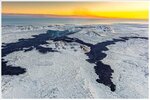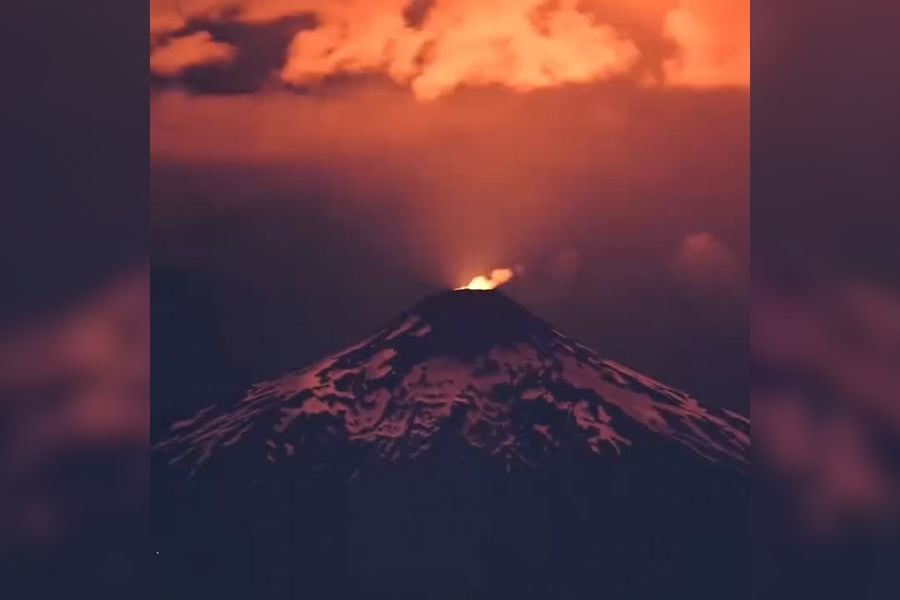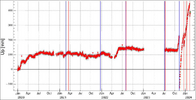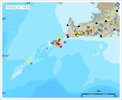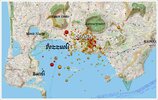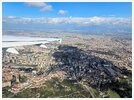XPan
The Living Force
Iceland
8 feb 2024
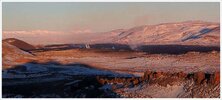
Iceland: Volcanic eruption has subsided considerably
Volcanic eruption weakens - hot water pipe destroyed
The volcanic eruption in Iceland, which only started this morning at around 6 a.m. UTC, had already lost a lot of its power by the early evening. The livecams currently only show a few spots along the 3 kilometre long fissure where there is lava spattering. In these places, small walls have already formed around the vents. As welcome as the news of the weakening of the eruption may be for the inhabitants of Reykjanes, it was not completely without consequences, because shortly before the lava flow weakened significantly, the lava flow reached the hot water pipe and destroyed it. But at least the workers had managed to bury a 600 metre long temporary pipe in the ground beforehand. They are currently working on connecting this to the hot water circuit, which could take until tomorrow. Until then, many residents of the Reykjanes Peninsula will have no hot water, which is tantamount to the loss of district heating.
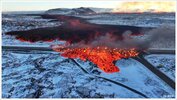
This example shows that geothermal energy is not without its drawbacks, because if you live in volcanically active areas, you have to constantly reckon with the loss of the systems. Admittedly, things have gone well for decades now, but what are a few decades on the time scale of a volcano?

After the pipeline was destroyed, the lava flow travelled a few tens of metres before stopping 500 m north-northeast of the Blue Lagoon. Satellite images show that it is a good 4.5 km long and partly crossed the lava field of the eruption on 18 December. This lava flow is the south-western arm of the flow, which roughly diverged in a westerly direction from the eruption fissure and split into two arms at the Stóra-Skógfell hill. The other flowed northeastwards from the rise and travelled a good 1200 metres. There was also a short lava flow to the south of the eruption fissure, but it was not quite as long as the flow of 18 December.
All in all, it was/is a short but violent eruption episode, the most remarkable feature of which was the fast-flowing and very thin lava, which volcanologists are now analysing as quickly as possible. Perhaps there will be new insights into the processes underground that will keep us busy for some time to come.
The eruption is not quite over yet, but the seismicity and tremor have clearly subsided. Considering how short-lived the previous eruptions in the area were, it is rather unlikely that the eruption will intensify again, although it cannot be completely ruled out.
Source article: Vulkane.net
8 feb 2024

Iceland: Volcanic eruption has subsided considerably
Volcanic eruption weakens - hot water pipe destroyed
The volcanic eruption in Iceland, which only started this morning at around 6 a.m. UTC, had already lost a lot of its power by the early evening. The livecams currently only show a few spots along the 3 kilometre long fissure where there is lava spattering. In these places, small walls have already formed around the vents. As welcome as the news of the weakening of the eruption may be for the inhabitants of Reykjanes, it was not completely without consequences, because shortly before the lava flow weakened significantly, the lava flow reached the hot water pipe and destroyed it. But at least the workers had managed to bury a 600 metre long temporary pipe in the ground beforehand. They are currently working on connecting this to the hot water circuit, which could take until tomorrow. Until then, many residents of the Reykjanes Peninsula will have no hot water, which is tantamount to the loss of district heating.

This example shows that geothermal energy is not without its drawbacks, because if you live in volcanically active areas, you have to constantly reckon with the loss of the systems. Admittedly, things have gone well for decades now, but what are a few decades on the time scale of a volcano?

After the pipeline was destroyed, the lava flow travelled a few tens of metres before stopping 500 m north-northeast of the Blue Lagoon. Satellite images show that it is a good 4.5 km long and partly crossed the lava field of the eruption on 18 December. This lava flow is the south-western arm of the flow, which roughly diverged in a westerly direction from the eruption fissure and split into two arms at the Stóra-Skógfell hill. The other flowed northeastwards from the rise and travelled a good 1200 metres. There was also a short lava flow to the south of the eruption fissure, but it was not quite as long as the flow of 18 December.
All in all, it was/is a short but violent eruption episode, the most remarkable feature of which was the fast-flowing and very thin lava, which volcanologists are now analysing as quickly as possible. Perhaps there will be new insights into the processes underground that will keep us busy for some time to come.
The eruption is not quite over yet, but the seismicity and tremor have clearly subsided. Considering how short-lived the previous eruptions in the area were, it is rather unlikely that the eruption will intensify again, although it cannot be completely ruled out.
Source article: Vulkane.net

